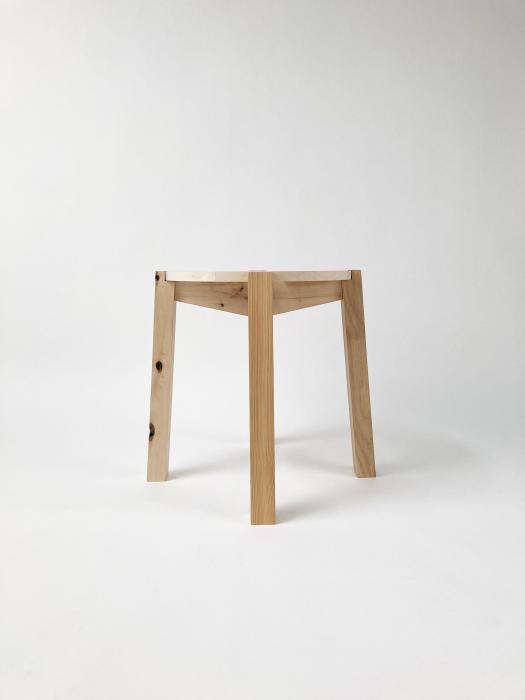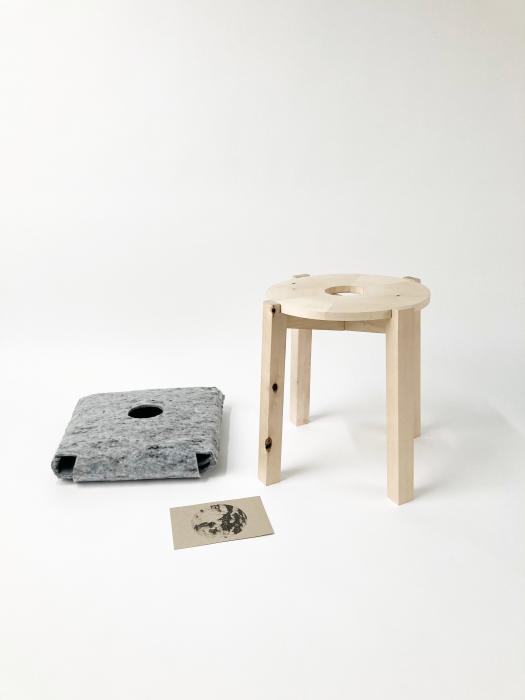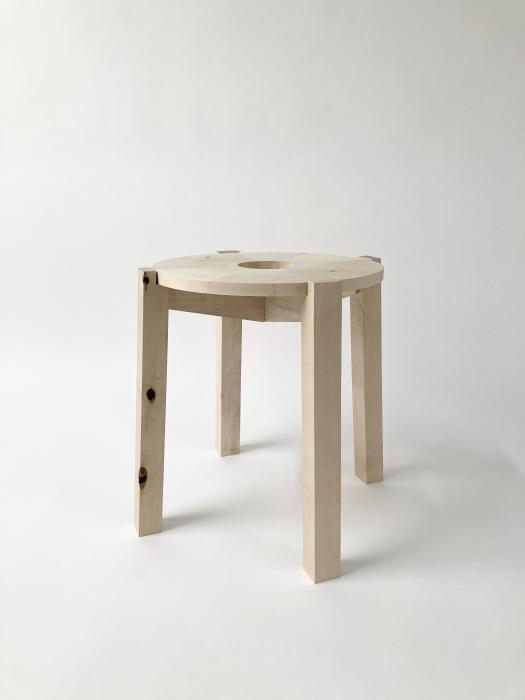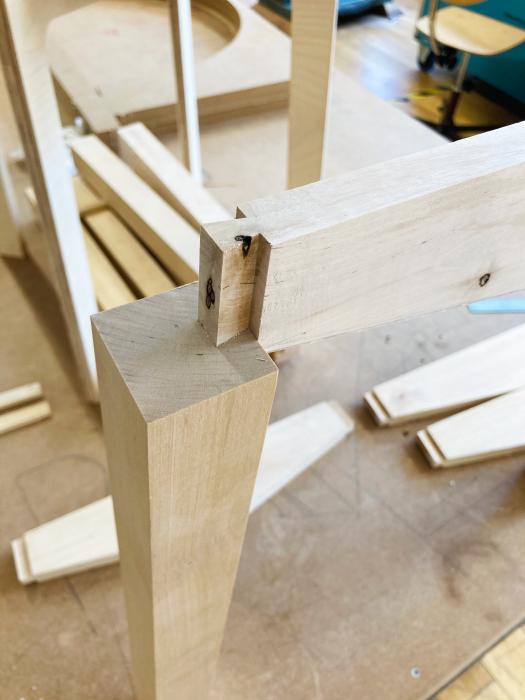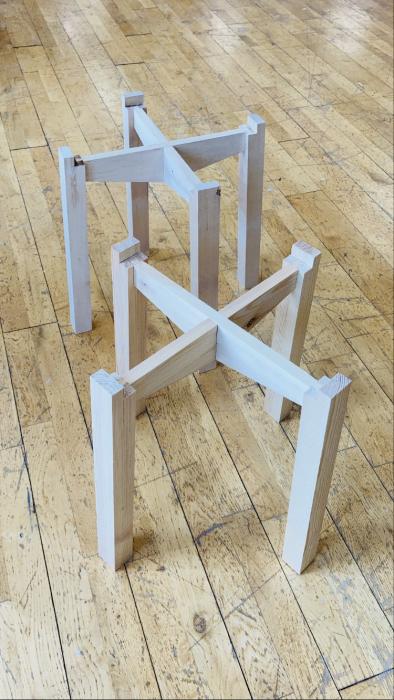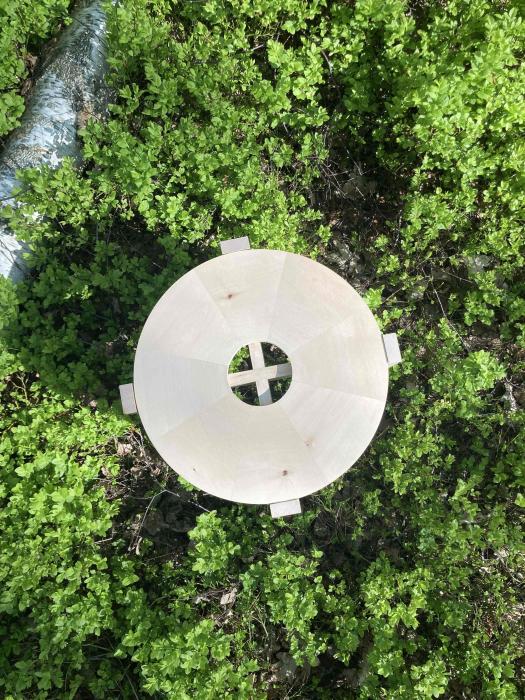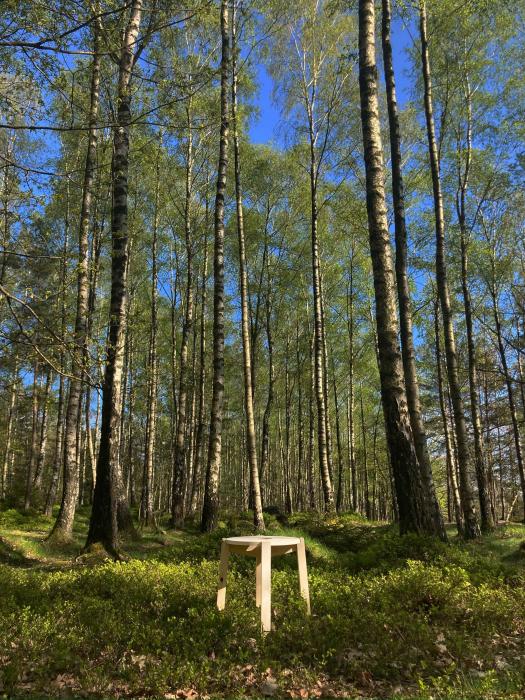I. SUMMARY INFORMATION
Project
269748
Status
Submitted
Award category
Products and life style
You want to submit
NEW EUROPEAN BAUHAUS RISING STARS : concepts or ideas submitted by young talents (aged 30 or less)
Project title
Available & Sustainable Interior Design
Full concept/idea title
A reflection on sustainability, in the form of a stool.
Description
"Available and Sustainable Interior Design", an alternative on sustainable furniture construction using local woods. A reflection on what makes wooden furniture sustainable in a long-term perspective, in the form of a stool.
Where is your concept/idea being developed or intended to be implemented in the EU?
Sweden
Västra Götaland
Västanvindsgatan 12A
Gothenburg
41717
II. DESCRIPTION OF THE PROJECT
Please provide a summary of your concept/ idea
The project is based on researching Sweden’s most common types of wood, its deforestation, and interviews with designer
Annika Grotell and sustainability specialist Anna Graaf. A reflection on what makes wooden furniture sustainable in a long-term
perspective, in the form of a stool. A sustainable design must be able to change with its environment, consisting of few components that can all be replaced. A sustainable material is seldom completely climate neutral.
The dimensions and a comfortable design of the stool were based on sketches, models and the analysis of eight different types of stools. The project uses the woods Birch Plywood, Pinewood, Birch and Oak, which are all classic wood types in furniture production and can be extracted from Swedish forests. The material ‘wood’ has the fantastic properties of absorbing and capturing carbon dioxide during its lifetime.
The first prototype consisted of three parts in the material ´Birch Plywood´, a crossed-leg design with a round seating and hole in the center making it liftable. Its three parts were then developed into seven, and made in the materials Pinewood, Birch and Oak. A design that makes the manufacturing of the stool possible in most types of wood.
The stool comes in a flat package with a complementary card, made of bark, that informs the customer about how the stool’s construction and materials are a more climate- sustainable design choice. It also provides facts about the wood’s origin, emissions and carbon dioxide content. Its packaging is made of recycled felt textile with sound-absorbing properties, which after mounting the stool can be folded and fastened as a seat on top.
Please give information about the key objectives of your concept/idea in terms of sustainability and how these would be met
The sustainability of the material wood is based on the felling process of the trees, the transport emissions, the strength of the material over time and the companies behind the forestry that affect the materials sustainability. Today in Sweden companies clear-fell large areas of forests backed by the argument that they plant new trees for every tree that is felled. The reality is that natural diversity is damaged by deforestation, "green insect corridors" are destroyed and forests never regain their balance. A natural system we can not restore with newly planted trees. The goal of the project is an alternative to sustainable furniture design using only local woods. A stool made of a puzzle construction without screws and a minimal amount of degradable glue, to not contribute to the steel industry that accounts for the largest carbon dioxide emissions today or use the plastics that wood glue contains. By using wood types in the area, the transport emissions are kept to a minimum. The types of wood are untreated and are thus suitable for natural decomposition. During the tree's lifetime, it has absorbed carbon dioxide from the atmosphere and after felling, the carbon dioxide is trapped within the fiber. As the owner of the stool, you actively keep the carbon dioxide away from our atmosphere. For a sustainable furniture construction I looked into traditional woodwork and used traditional joints, salmon tail joints, making the design easy to assembly and take apart. All parts of the stool are replaceable, giving the customer the opportunity to replace only affected area of the stool, when damaged, and keep the design in good condition and alive longer. The production of spare parts are based on sustainable tree felling, in consideration to the tree’s original environment and season. The right tree at the right time. A production controlled by the forest itself and its ecosystem.
Please give information about the key objectives of your concept/idea in terms of aesthetics and quality of experience beyond functionality and how these would be met
I created the stool in the materials Pine, Birch and Oak, but its design can be applied to most types of wood, which makes the stool flexible in its expression and accessible in its price range. I wanted to open up a discussion about deforestation by using wood as a material and the material's beautiful varying looks.
Due to the design's changeable nature its dimensions and aesthetic can be adjusted, which means that it can flexibly grow with its owner and its surroundings for a longer period of time. Like the Japanese repair technique “Kintsugi”, repairing cracks and damage with gold, I see something beautiful in the fact that the stool’s expression changes with its use. Where elements of other wood types indicate a product whose character has grown over the years. The customer’s opportunity to influence the stool’s identity is my alternative on sustainable design as I want to encourage a personal connection between owner and product. A bond I find of significance when it comes to a products longevity and care.
The packaging of the stool consists of sound-absorbing recycled felt textile which, after the stool has been assembled, can be folded and attached as a seat cushion on top. The packaging is kept together by a cross-shaped button, made of the residual material from the production of the stool and has its shape due to the stools characteristic "cross"-body. I wanted to give the packaging a purpose after the unpacking of the stool, to not contribute to today’s “throw-away culture” while creating a softer sitting experience, and with its sound-absorbing properties create a more calm environment. When receiving the flat packaged stool, the product comes with a complementary card, made of bark, that informs the customer about how the stool's construction and materials are a more sustainable design choice. It also provides facts about the wood's origin, emissions and carbon dioxide content. An honest product, where the buyer can take part of the whole identity.
Please give information about the key objectives of your concept/idea in terms of inclusion and how these would be been met
To base the expression of the stool on local wood types I see a great opportunity for variety and representation when bringing production of my stool beyond the borders of Sweden and let my design be altered by other local wood types in other countries. The idea is for the material-identity of the stool to reflect the area it comes from and is made for, local production for locals, showing you the beauty within the forests around you. To include as many people as possible I wanted my design to have a broad price range, where the price varies depending on which wood type the stool is made of, but where the design remain the same. To avoid my design being bound to a certain financial prerequisites.
When developing the stool I wanted to dedicate a furniture design to children in primary school. I found their environment great for setting the rules of my design's flexibility, create a design based on active sitting, and turn to a school environment due to it being where each individual learn and are open to grow. I saw an opportunity to come up with a sustainable alternative for school furnishings and at an early stage get children to get in touch / gain knowledge about sustainability and our climate impact. I also wanted to include the user of the stool in it's construction, where you without tools and much ease put the design together, like a puzzle. We have more than ever the chance to educate ourselves and actively improve our impact on the climate, where each individual plays an important role in the development towards a sustainable future. Making environmentally smart choices should not depend on an interest in the environmental issue or a certain economic freedom.
Please explain the innovative character of your concept/ idea
The first time when I in the wood workshop asked for guidance on how to make my design (a design capable to be produced in any wood type, easy to assemble and take apart without tools, construction without glue/minimal amount of glue and without screws or nails) the response was “that's not how you make a stool”. A fantastic observation that made the design even more obvious to me. That’s exactly how I wanted my stool to be, the way you usually do not make a stool.
The stool is based on sustainability in all its parts; from the extraction of the material, to its local production, its traditional-based joinery and exchangeable construction. You find it within its packaging, its lifecycle and ability to grow with its home-environment, and also its degradable properties when reaching the end of its lifetime. The vision I had for my design is what I hope to see become the standard in developing new products for the future. Where we think about the impact we have when adding to our surroundings, every step of the way. I also hope to see all products communicating directly to the buyer where and how it's been made, for a more honest and aware product.
My design is the result of mixing sustainability, innovation, tradition, wood, textile and craftmanship all together. I have made a stool, meant to be as simple and easy to use as possible, but i've based every decision in my design on the complexity that comes with climate change, and how to scale down my impact as much as I can in the development of my product. With the goal to add thoughtfully to my surroundings.
Please detail the plans you have for the further development, promotion and/or implementation of your concept/idea, with a particular attention to the initiatives to be taken before May 2022
In Sweden I want the production of the stool to be in collaboration with “Plockhugget”, a swedish organization consisting of forest owners and environmental activists owning forests on multiple places through the country. This organisation fells trees in consideration to the biological diversity of the tree's environment and it is done through carefully selected picking-timber, which is selected trees from specific places at the right time. Where felling does not affect the rest of the ecosystem. Due to organisation's spread in the country, this cooperation means not only the right timber at the right time, but also shorter transports of the types of wood for production. I would like to see the production of the stool to be in collaboration with organisations which has this mindset when it comes to how we use our forests around the world.
A continuation for my stool is to get it into production. Many producers today are looking for new products that can reach the sustainability goals and I see a number of companies where my stool could be a great fit. It is important for me to find a partner with the same vision of sustainability and with the drive to explore further how to communicate sustainability and our impact through thoughtful design. I hope to see my stool contribute and be a part of available design's of today, as an example on how transparent and sustainable design is commercially viable.
III. UPLOAD PICTURES
IV. VALIDATION
By ticking this box, you declare that all the information provided in this form is factually correct, that the proposed concept/idea has not been proposed for the New European Bauhaus Rising Stars Awards more than once in the same category.
Yes
